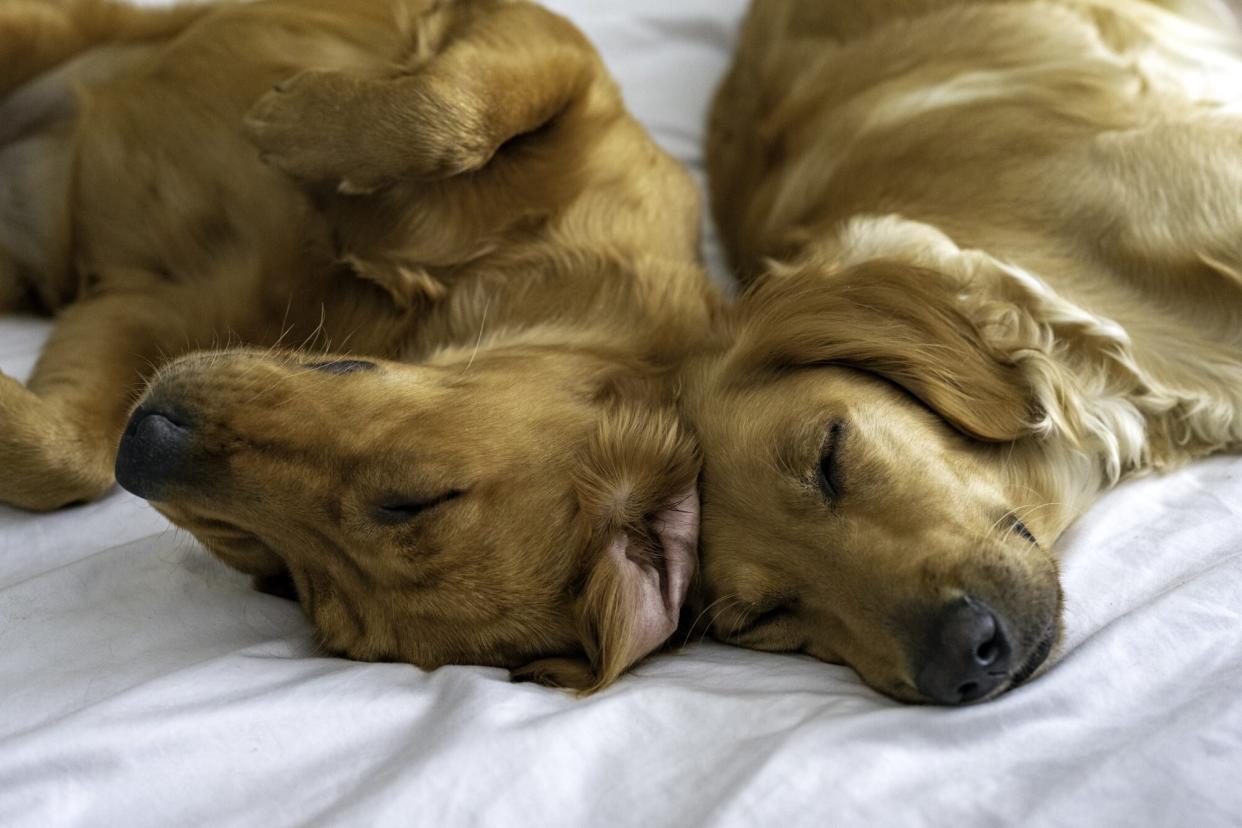Do Your Dogs Look Like They Are Running in Their Sleep? Experts Say They Are Dreaming

Christine McCann / Getty
The behaviors of beloved family dogs definitely vary from household to household, but there is a universal one that really confuses pet parents: A lot of canines mimic running in their sleep. If you see your dog twitching their paws or moving their legs while they snooze, they're most likely dreaming. "I've seen it in my own dogs. They're running, they'll whimper, they'll bark, and they'll wake themselves up like they don't know where they are," Marcos Frank, a neuroscientist and professor of animal sleep functions at Washington State University, told CNN.
These involuntary muscle movements (when paws flare or eyes flicker) that occur during rest are formally called myoclonus—and both dogs and humans experience them most often during REM sleep. (Frank notes that humans move like this when they have vivid, colorful dreams.) A study published in the journal Physiology & Behavior back in 1977 explained that 12 percent of dogs' lives are consumed by their REM sleep—and scientists now believe that dogs are dreaming based on the similar sleep behaviors they share with humans.
Related: Why Your Dog Follows You Everywhere, According to Behaviorists
"From dogs to humans, most mammals exhibit the same basic states of sleep," Frank continues. "We can't say conclusively that dogs are having experiences like we do when we dream, but it's hard not to imagine they are." Don't expect to see your dog "full-blown running in their sleep" the animal expert added, as this is less common because of pons, "a mechanism in the brain that actively paralyzes you from the neck down. It's a fascinating phenomenon, and it's what normally keeps you from acting out your dreams."
A study published in the journal Scientific Reports in 2017 uncovered that dogs might also use their naps to help boost the memories they made while they were awake. To test this theory, dogs in the study learned new voice commands. One section of the volunteer group would sleep after their lessons; the other would play. The canines that slept afterwards ultimately understood the commands better, which led the researchers to believe that they were remembering the lesson in their sleep.

